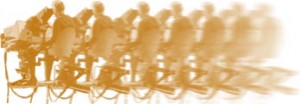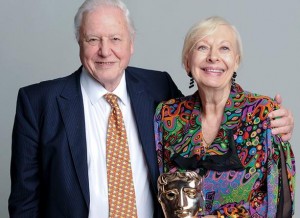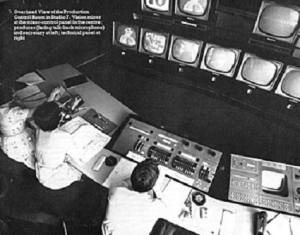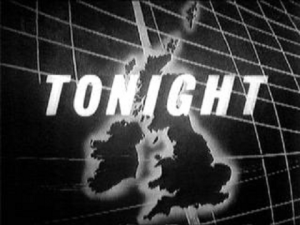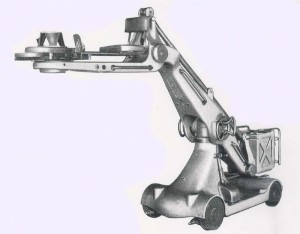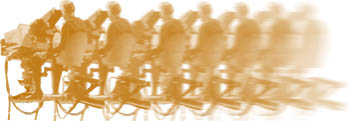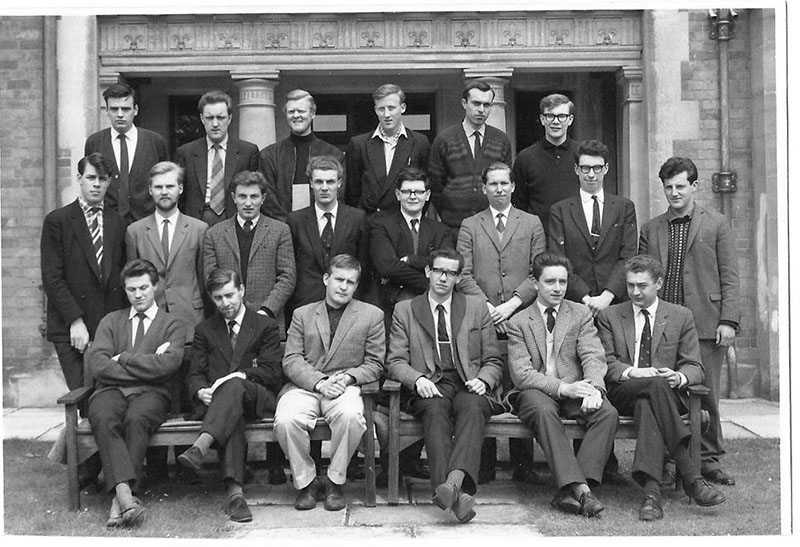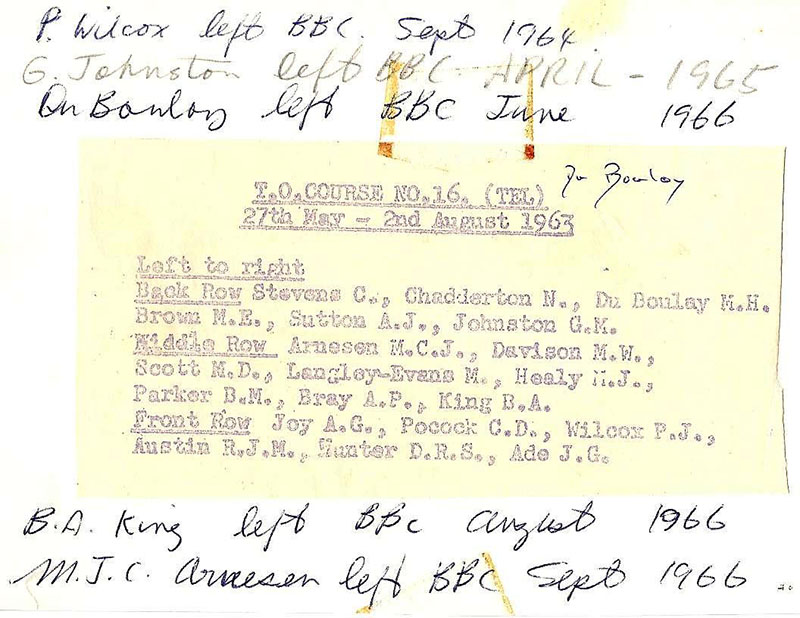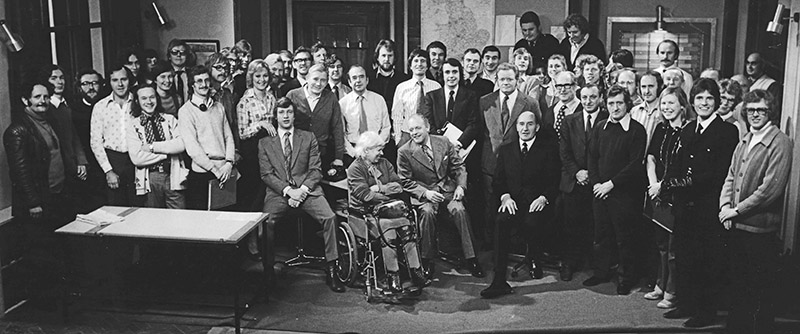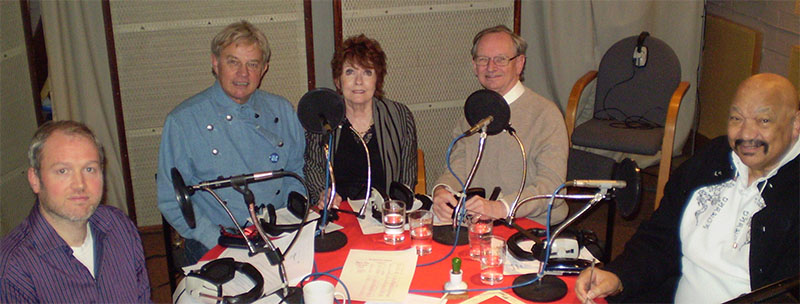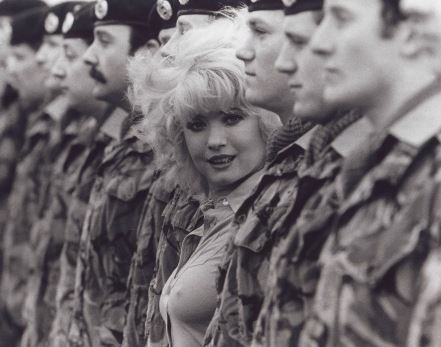Tech Ops people have been emailing about any and all aspects of BBC programming – current sound and picture quality, quality of content and comparisons with BBC reality and the spoof “W1A” – it is sometimes difficult to tell the difference!
The Tech Ops site captures photos and stories that former Tech Ops people could share from the nineteen sixties and seventies (and occasionally earlier and later) – that is, during the golden age of television, when the BBC was the best – and most respected – broadcaster in the world.
Some topics compare a “then” and a “now” (for a given definition of “then” and “now”), and so earlier and later photos and stories are included where appropriate and relevant. Destruction and sell-off of places we worked, and changes in the BBC way of doing things are also included.
This set of conversations, then, does not capture every thread of the Tech Ops emails, so apologies if a favourite recent topic is not recorded here.
++++++++++++++++++++++++++++
6 Days – the siege of the Iranian Embassy in 1980
A BBC Outside Broadcast unit was available, and captured some of the most memorable scenes of the siege and its resolution. Trapped inside the embassy – and one of the first to make his way out – was Sim Harris of BBC News – and ex OBs.
++++++++++++++++++++++++++++
8 mm Projector and Film
Gary Critcher had a picture of a Eumig P8 projector. This led to futher comments and to Pat Heigham describing how he put together his -er – illicit 8mm film of the “Black & White Minstrel Show”.
++++++++++++++++++++++++++++
“Best of Both Worlds” 1964
In 1964 there was a series on BBC 2 called “Best of Both Worlds” which featured big orchestras from both sides of the Atlantic, and was produced and directed by Yvonne Littlewood.
++++++++++++++++++++++++++++
“EastEnders” Live Quality (Feb 2015)
It started as a discussion about the quality of the live parts of “EastEnders” during the anniversary week, but quickly moved on to Ultra High Definition (UHD), 4K and 16K.
++++++++++++++++++++++++++++
“Fifty Shades of Grey”
This is not about black and white Television!
E.L. James, the author of “50 Shades of Grey”, is the daughter of the late Alistair Mitchell, known universally as Mitch, who was a long serving cameraman and latterly supervisor with London BBC OBs.
++++++++++++++++++++++++++++
“Grandstand” Memories
It’s a Saturday in the sixties, it’s twelve o’clock – it must be “Grandstand”!
++++++++++++++++++++++++++++
“PlaySchool” and “Playaway” Musicians
What musicians were there in the group? Someone would have had a swannee whistle if nothing else!
++++++++++++++++++++++++++++
“Poldark” – the original version (1975 to 1977)
From the “Birmingham Mail” Poldark Original Actors:
” … the benchmark for the period drama was actually set in 1975, when the first series was screened. And although all the sex and scandal happened in 18th century Cornwall, the series was actually made in Birmingham. Poldark, which ran from 1975 to 1977, was a BBC Pebble Mill production and all the interior scenes was shot at the Birmingham studios…
It was watched by 15 million people in Britain and aired in 40 countries around the world…”
++++++++++++++++++++++++++++
“The Adventures of Robin Hood”
Um…. “The Adventures of Robin Hood” was commissioned by Lew Grade, filmed by Sapphire Films Ltd for ITC Entertainment and shown on ATV. Not live or telerecorded, not BBC – shouldn’t be here … However, there was a lot of interest in the signature tune (and so on) on the Tech Ops mailing list …
++++++++++++++++++++++++++++
A Dalek looks at VT
One of the Christmas VT tapes had a very inventive sequence shot by VT guys of a Dalek chatting up a 2″ VTR.
++++++++++++++++++++++++++++
Art at the BBC
What has happened to some of the artwork produced for the BBC and BBC programmes with the destruction of OBH and TC.
++++++++++++++++++++++++++++
Big Ben Model
In the days when OBs and lines could be problematic, the Beeb had made a highly detailed model of Big Ben’s clock face, about three feet tall, to cope with any unexpected line failure(s) on a New Years Eve.
++++++++++++++++++++++++++++
Boredom on set?
A TO’s life could never be boring – could it? Things to keep you occupied…
++++++++++++++++++++++++++++
Catch Up on Previous Conversations (July 2015)
A number of points made about topics covered in previous conversations but which were received after the conversations had been published. Comments cover:
- Lens Change on shot – On Purpose
- Aspect Ratios
- Ally Pally
- Sex and the Sixties
++++++++++++++++++++++++++++
Children’s TV in the 1950s
“Whirligig”, Mr. Turnip, Hank and Silver King – Saturday at 5 pm-ish
++++++++++++++++++++++++++++
Crossed Lines
Wires that should go from here to there sometimes go from erehwon to somewhere else.
++++++++++++++++++++++++++++
Destruction at Television Centre
Some pictures of the mad destruction of an iconic building.
++++++++++++++++++++++++++++
Dick Barton, Stereo and Binaural Sound
A bit of a mixed bag, this topic. Some episodes of “Dick Barton” were transmitted in stereo on Radio 4 in the 1970s. This led on to a discussion about binaural sound and stereo sound – and some of the (early) experiments in stereo/binaural transmission that were made by the BBC.
++++++++++++++++++++++++++++
Drink in the Mix(er)
Here with a bank of faders set up well,
A cup of coffee, script and score – oh hell!
Reaching for another fader under stress –
The drink is in the mix – a total mess.
++++++++++++++++++++++++++++
Ephemera
A page of miscellaneous ephemera.
++++++++++++++++++++++++++++
Expenses … when the food is available
There was already a thread concerning the expenses paid to TOs and crews generally: and then this happened …
Jeremy Clarkson was furious to find that there was no hot meal available when he returned from a drinking session at a nearby pub. Clarkson complained it was “ridiculous there was noting to eat” and that the producer had not done his job properly. After a 40-minute rant, Clarkson punched producer Oisin Tymon in the face after he had sworn at him and referred to him as a “lazy Irish”.
Tech Ops people also found there were times when no food was available.
++++++++++++++++++++++++++++
Falklands – and Noel Edmonds
To the Falklands by Hercules.
++++++++++++++++++++++++++++
Familiar Face(s)
From fighter pilot to Technical Operator.
++++++++++++++++++++++++++++
Foreign Powers
The power supplies in foreign countries, especially in India, with some other observations.
++++++++++++++++++++++++++++
George Ageros
Sound Supervisor.
++++++++++++++++++++++++++++
Goodbye to the EMI 2001
Access to an article in “Ariel” which says “goodbye” to the EMI 2001 – the cameraman’s camera.
++++++++++++++++++++++++++++
Heard on Talkback
Classic phrases uttered on talkback – or on transmission for that matter.
++++++++++++++++++++++++++++
I Walk the Line
Or walk across the production and/or mixing desk if there is no other way out …
++++++++++++++++++++++++++++
Learn your Lines and Hit your Marks
In the days of theatre-type (multicamera) live (or recorded as live) drama, actors, cameramen (and trackers) and boom operators (and trackers) were often rushing from set to set to get the next shot. It was very important for the actors and actresses to be able to know their lines – and to hit their marks. The vast majortiy of television actors and actresses in the golden years of television were very good indeed in terms of these “mechanics”.
++++++++++++++++++++++++++++
Lovely Ladies
Early in the 1960s, Vision Mixers – who had been part of the studio Tech Ops crews – were moved over into Production. So for a couple of decades, the studio crews were exclusively male. Any ladies who crossed our path, especially those we poked cameras at or fumbled with microphones around, obviously caught our attention.
++++++++++++++++++++++++++++
Mic Boom Experiences
Tracking and using Mic booms, and differences in techniques between television and film.
++++++++++++++++++++++++++++
Microphones
Different types of old microphones and a gun mic story.
++++++++++++++++++++++++++++
More about Asbestos in TC
More about the discovery of asbestos in the Television Centre studios and its aftermath.
++++++++++++++++++++++++++++
More About Jim Atkinson and Frank Wilkins
Cameramen and characters.
A timid TO glanced in a studio where crew 5 were working one day, and there were two guys holding up Jim’s cable from the floor, so there would be no drag – and no sound of the cable being dragged, either.
Here are stories told by those who worked with Jim and Frank.
++++++++++++++++++++++++++++
More Cards
- Crew 3: Investiture of the Prince of Wales
- BBC Club Christmas Card 1963
++++++++++++++++++++++++++++
More Memories of Dock Green Nick
Cue sniff. Cue Jack. “Evenin’ all…”
++++++++++++++++++++++++++++
More Stewart Morris Stories
“… The credit “Produced by Stewart Morris” was the final caption on hundreds of BBC light entertainment programmes from 1958 to 1992.
But every programme with Morris was a rollercoaster ride …”
said The Independent.
++++++++++++++++++++++++++++
More “Z-Cars”
“Z-Cars” in 1964 – and the “Z-Cars” signature tune.
++++++++++++++++++++++++++++
Not for the oosily effended
WARNING: This page may offend some people.
This is a section of a script from a Freddie Starr show originally shown on BBC TV back in the 1970s. The irony is, the BBC received not one complaint.
That was then …
++++++++++++++++++++++++++++
Oil be oil right
This is about incidents from the 1980s – and on oil rigs and oil platforms – outside of the default Tech Ops website timeframe.
++++++++++++++++++++++++++++
People in Photos
Photos from TO courses, in the crew rooms, in the gallery and on set.
++++++++++++++++++++++++++++
Personalities – The Crew (and others)
- Barbara Slater
- Fred Viner
- Len Shorey
- Bernard Lodge
- Warwick Fielding
- John Staples
++++++++++++++++++++++++++++
Personalities – The Talent – 2
- Ronnie Barker
- Harry Rabinowitz
- Katarina Witt
++++++++++++++++++++++++++++
Pinkoes and Traitors
Tech Ops discuss the error-ridden book by Jean Seaton – meant to be part of the official history of the BBC (and the nation) between 1974 and 1987.
++++++++++++++++++++++++++++
Plugs and sockets bonanza
Was a “double-ender“ a cord with two PO jacks at each end for use on a jack field (or just any cable with two male plugs)?
The BBC used the D&S plug, with its self-removing fuse pin, perhaps to prevent something like a vacuum cleaner being used on tech supplies.
There were lots of different plugs and sockets in use during our time. Here is a discussion of just some of them.
++++++++++++++++++++++++++++
Producer Choice and BBC Outsource
Discussion on aspects of Producer Choice and an aside on the effect on one aspect of BBC Outsourcing in 2004-ish.
++++++++++++++++++++++++++++
Riverside Destruction
Demolition of Riverside Studios: nothing left recognisable AT ALL!
This prompted memories of working at Riverside.
++++++++++++++++++++++++++++
Sound Ladies in Costume
Two ladies from the sound empire in a costume drama.
++++++++++++++++++++++++++++
Strange (CGI) Trains in Programmes
“Call the Midwife” has a scene/set where there is a railway bridge – and occasionally a train rumbles over it. But a steam engine with FIVE tenders?
“EastEnders” has a prominent London Underground bridge (and tube station) in or near Albert Square, and at various times trains appear to cross the bridge.
++++++++++++++++++++++++++++
Striking Seventies – and the “PlaySchool” Clock
Should the “PlaySchool” Clock be operated by the Sparks, because it was electrical, or was it a prop? In the nineteen seventies there was a lot of unrest, manifested in Union activity: when one TO joined in Feb 1978 all he seemed to do was to spend the first few Decembers on strike or working to rule.
++++++++++++++++++++++++++++
TC1 B&W 405 and 625
Did TC1 ever work 405 lines (B&W) or was it always 625 lines?
++++++++++++++++++++++++++++
The AP Shift Pattern
In response to a question from one former Tech Op, the “AP Shift System” is described – however, not everyone who worked at Ally Pally worked the AP Shift system (although Pres in TC did!)
Alternative shift systems are described and compared to the AP Shift.
++++++++++++++++++++++++++++
The Art of Direction – 2
An ironic title for this section, as it discusses the paucity and poor quality of training for directors nowadays. Bring back the Practical Production Exercises – all is forgiven …
++++++++++++++++++++++++++++
The BBC Micro
The BBC Micro was a game changer in British schools of the 1980s, and is part of the reason that the UK is such a big player in the computer games industry.
++++++++++++++++++++++++++++
The Mythical Studio C
AP had studios A and B,
LG had Studios D, E, F, G and H (although F was a scene store).
But where was Studio C?
++++++++++++++++++++++++++++
Toehold on Sound
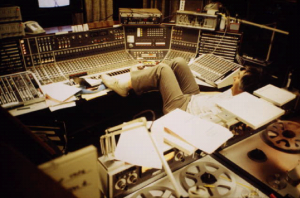
++++++++++++++++++++++++++++
TOTP – “Paperback Writer”
Pictures taken on the occasion of the now wiped TOTP performance of “Paperback Writer” and “Rain”, 16th June 1966 in TC2.
++++++++++++++++++++++++++++
Travelling Backwards
The Goons sang I’m Walking Backwards to Christmas.
There have been occasions when the telerecording has been run backwards on purpose (or not?).
++++++++++++++++++++++++++++
Unused and mythical London Underground Stations
There are a number of unused London Underground stations – and there are some “secret” London Underground stations, too. No wonder stories about them abound.
Now, what exactly was underneath old Broadcasting House?
++++++++++++++++++++++++++++
Warnings and Notices to put on Machines
Useful notices to keep prying fingers out of the innards.
++++++++++++++++++++++++++++
When Television was Young and the Audience was Old
Many of our grandparents (parents, even) and other ancient relatives grew up in a time before television – before indoor toilets, electricity, aeroplanes, cars … and not surprisingly some were slightly hazy about the technicalities and conventions of the new medium.
++++++++++++++++++++++++++++
Where in TC is this parked?
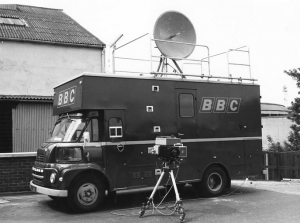
++++++++++++++++++++++++++++
Will, Shall, Show and Shewn
Rather off topic, this, but it was an interesting thread which came about as a result of a discussion about a painfully ungrammatical sign at TC.
++++++++++++++++++++++++++++
We stop the Mighty Roar of London’s Traffic
Wood Lane was a busy road in the 1960s, even more so latterly. Add in the rattle of the Metropolitan l
ine (as it was then) trains rocking and rolling down to the Bush and then past Lime Grove (although the trains are now (2015) brand new and the line has been rebranded back to the “Hammersmith and City” line (the “hot and cold” of old)).
Sometimes it was difficult to exclude all the noise.
++++++++++++++++++++++++++++
Wood Norton Hall Club Guide and Accommodation D Block
More about Wood Norton Hall – and what we got up to.
++++++++++++++++++++++++++++
And Finally …
A 20 Hz sine wave walked into a bar.
The barman asked: “Hey, why the long phase?”
The 20 Hz Wave answered: “I’m feeling sinusoidal, right out of ports*, must be something to do with my period”,
but the Barman didn’t like her tone.
—————————
thanks to Warwick Cross, John Howell, Barry Bonner, Philip Tyler et al
*IT rather than TO – sorry …
++++++++++++++++++++++++++++
